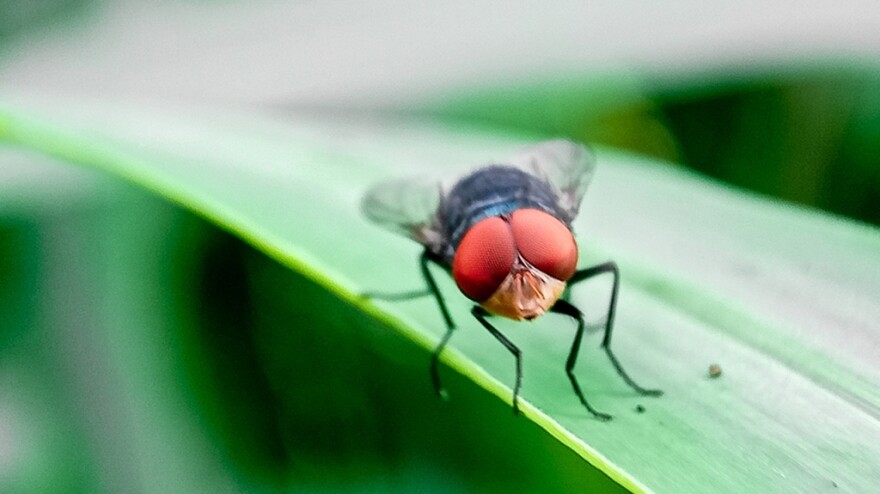New world screwworms have been spreading in South America, and Oklahoma lawmakers and officials with the Oklahoma Department of Agriculture discussed the pests' impact and what is being done to prevent their spread.
Adult screwworms start as maggots that feed off live, healthy tissue, unlike other common maggots that typically prefer decaying food. Although the insect has been eradicated in Mexico and the U.S., it has been detected in Central America.
In Oklahoma, officials are focusing on a response because they say an outbreak would be costly to producers and result in economic losses.
During a joint session of the Oklahoma Senate and House Agriculture Committees, Oklahoma State Veterinarian Rod Hall said the fly spreads through laying eggs around the edge of open wounds as small as a tick bite.
"What makes them so dangerous, they continue to eat that tissue, and they don't just stay on the surface, they continue to go deeper and deeper and deeper which makes it sometimes hard to even know that they're there," Hall said. "And certainly, much more difficult to treat them once we get them."
Infestations of the insect are painful and can affect livestock, pets, wildlife, sometimes birds and in rare cases, people, according to the U.S. Department of Agriculture. Hall said it can make animals ill and cause death.
Now, the state agriculture department is working with the USDA. This month, the USDA suspended live cattle, horses and bison imports along the southern border.
The state department is focusing on education and outreach for the time being, and will start doing surveillance if it gets into Texas. Hall is on a working group made up of other state veterinarians.

Hall said certain deworming products are effective treatments, and insecticides ranchers use for flies and ticks prevent screwworms.
"It's just that is only going to prevent them for so long," Hall said. "And we just screwworms are just so much more aggressive that we just have to be very careful about them.
Officials stressed the insect can impact different animals, but it is especially a concern among ranchers raising cattle. This comes as the nation's cattle herd has dipped to record lows, driving up beef prices. Sen. Casey Murdock, R- Felt, said if the insect causes an outbreak in the U.S., it could kill animals and shorten the supply.
"People don't need to worry about their food. It's more the supply," Murdock said. "That's where it's going to affect our food supply, not the quality."
The closest case is about 700 miles away, but Murdock said it is not a long distance. He said a loss of production would impact the state's economy and treatment for the animals would also be costly to producers.
These screwworms are not a new problem.
In the 20th century, the U.S. livestock industry spent over $100 million to eradicate the New World screwworm, according to the Pennsylvania State University Extension. Over the years, the U.S. and Mexico worked to get rid of the fly through releasing sterile larvae and was weeded out of Oklahoma in the 1960s.
This created a buffer area preventing the screwworm from reaching the U.S. and Mexico, but there would be cases detected.
In 2023, detections of the insect crept back up, and since then, there have been more detections in Central America, according to the USDA's Animal Plant Health Inspection Service. After the fly was found in a cow in southern Mexico in late 2024, the USDA announced the release of $165 million in emergency funding to protect animals and increase the effort to control the spread in Mexico and Central America.
This report was produced by the Oklahoma Public Media Exchange, a collaboration of public media organizations. Help support collaborative journalism by donating at the link at the top of this webpage.








